#widercontext
Explore tagged Tumblr posts
Text
Source notes: Continuous World Generation in No Man's Sky
youtube
Selected points of interest:
No Man's Sky engine treats procedurally generated content the same as loaded, artist created content.
Multiple approaches to generating planets were tried before landing on final method — interesting question for caves, with so many techniques documented out there, is there a clear winner or winners when it comes to generating full cave systems that can be treated as standalone models (the aim of the project is to generate a cave model that could be imported (either as a whole or in sections) to any Unity project)?
LOD considerations — depending on size of generate caves and memory requirements, will subdivision and creation of lower-poly regions be necessary?
Many of the considerations for integrating high fidelity procedurally generated content discussed in the talk will also apply to caves — how much discussion of that is within the scope of the project? Highlights the need to decide upon boundaries and main research question.
Inclusion of seeds and config files (XML in this case) to recreate generated content.
Emphasises design control over generation, which was already an intended goal of the solution to be developed, and other requirements.
Dual Contouring should be considered as an alternative to Marching Cubes for polygonising the cellular automaton field in the technical artefact of the Masters project.
Use of noise, with a height cut-off to place foliage, and more noise to reduce density. Recursively placing foliage/decoration of decreasing scale (for example, tree -> bushes -> plants -> pebbles) to build up the scene.




0 notes
Text
Filming Architecture – Activism & Research through the Lens
Introduction
A film documentary today is becoming a very popular mean of presenting not only the prominent figures of architectural discourse but raising important questions regarding widercontext of our industry – from architectural perspective of addressing global climate concerns to more polarising issues around gentrification in large cities vs citizens’ rights for a decent affable housing. In a recent pursuit of the film craze, the Guardian has published an article 'A brief history of architecture on TV' that introduces the highlights of the various formats of representing architecture on film in the UK for media savvy generation (Image 1.1).[1]
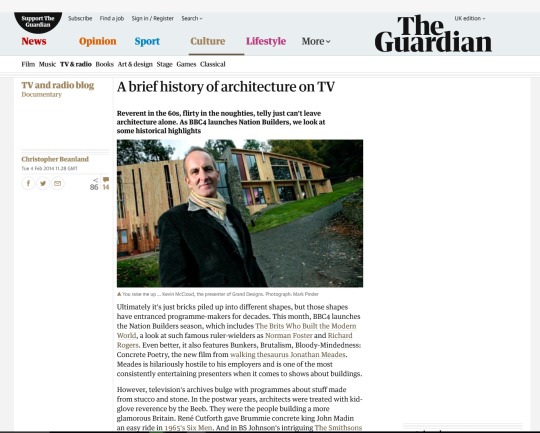
(Image 1.1 - The rise of architecture on TV)
The idea of introducing the documentary piece as a part of Linked research project was firstly suggested as an outcome of dissertation project on Brutalist housing estates preservation and agencies involved into that process back in 2016. The project was exploring various architectural case studies across the UK, where it was often accompanied with a series of rather informal interviews with keen residents of those sinking estates. By the time the research was completed, thefirst observation was some sense of frustration and disturbance that in fact it was another piece of academic writing that would be limited to the narrow group of people. Secondly, it would be lost amongst a stream of current publications ranging from students to well-known architectural critics such as Oliver Wainwright or Owen Hatherley with their highly provocative articles on currently mainstream subject of Brutalist architecture in UK. It is also undisputable fact that documentary film has a much greater power of its visually documented evidence in comparison to various publication or live conversation formats.[2]
At the start of the Linked Research project on Dunelm House in Durham, which itself is a Brutalistbuilding with an uncertain future, the idea of documentary was re-introduced as a piece of collaborative group research enquiry. Within the context of architectural activism and its associated methods, the Linked Research group is aiming to investigate around Save Dunelm House campaign as a case study, where the documentary film plays an important role of delivering various opinions under one general line of enquiry on screen – to depict the roles of various agencies in preservation of modernist heritage and how they affect the determination of building’s value resulting in potential conservation effort or unremitting demolition.
The intent of documentary research
We’re mapping this campaign as a live case study and aligning it against other examples of both successful and failed architectural activism to establish if there are any correlations between various opposing political agendas and the consequenttranslation into efforts of conservation. This research is going to cover a broad range of topics, focusing on the concept of what is valuable in architecture, not simply from an aesthetic perspective, but from a deeper study of the contextual, historical, social and practical value of existing buildings and how different perceptions of the importance of each of these elements determine whether a building is worth saving.
The research is investigating the different agencies involved in relation to the current Save Dunelm House campaign and how they influence the determination of what is ofvalue and subsequently whether certain buildings are worthwhile to conserve, reuse or demolish. This live campaign alongside other comparative examples of both successful and failed architectural activism, will be used to establish if there are any correlations regarding political influences, agendas and pressures and their subsequent translation into efforts of conservation.
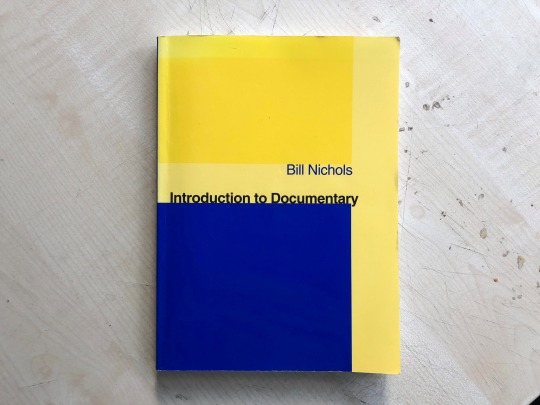
(Image 1.2 'A researched copy of Introduction to Documentary by Bill Nichols, donated by Helsinki University library to us)
Supportive literature on filmmaking
In the course of preparation for initial documentary enquiry, we were suggested some useful readings, particularly Introduction to Documentary by Bill Nichols published in 2001, which text provides an up-to-date introduction to the most important issues in documentary history and criticism. Bill Nichols is a pioneering film theoretician and critic and internationally recognised for his extensive research of contemporary documentary film with his first publication Representing Reality: Issues and Concepts in Documentary in 1991, which combined contemporary film theories to the study of documentary film for the first time.[3] If we could describe the book in a short sentence, the chapters are based on specific questions suggesting definitions of documentary, ethics, main common types or strategies to structure as well as providing some significant examples of films to reflect on. It is quite easy to read for amateurs and students that haven’t studied film before with clear descriptions and supportive visual examples along the text that help to define the elevated pitch of the documentary and inform about filmmaking historic background.
The modes of documentary
Initially, it was very important to determine the type of the architecture documentary, which will correspond to the objective of our outlined research aim and its goals. Several various architecture documentaries have been examined prior to explore possible means of representing the building narrative and its polarising opinions in film media format. According to Shot by Shot: A Practical Guide to Filmmaking by John Cantine, Susan Howard & Brady Lewis, the essential definition of documentary film:
‘In its most basic sense a documentary is a film in which the filmmaker allows the action or events to unfold naturally with minimal interference…The very process involved in making a film requires that the artist manipulate the subject material to some extent. Differences in documentary style are often a matter of the degree of manipulation the filmmaker chooses to impose’.[4]
The first import moment is to identify the type or style of the documentary. According to studies Introduction to Documentary by Bill Nichols, documentary movie has six main modes of representation, which function something like sub-genres such as ‘poetic, expository, participatory, observational, reflexive and performative, although the movie can incorporate several modes at the same time under one dominant theme.[5] Poetic mode is characterised by artistically ‘representing reality in terms of a series of fragments, subjective impressions, incoherent acts and loose associations’ while expository mode ‘assembles fragments of the historical world in rhetorical or argumentive’ that makes the main agenda of the film objective and well-argumented.[6],[7] Jonathan Meades documentaries on architecture and food, which will be introduced earlier, have a certain blend between these two modes, which depict well-structured and historically/factually supported argument with inclusion of random artistic acts.
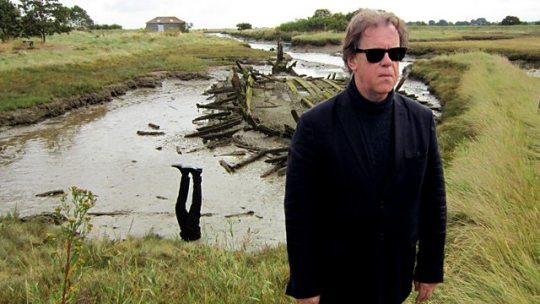
(Image 1.3 'Visually impressive and typically idiosyncratic program, Meades provides a historical and architectural tour of Sussex')
Observational mode is ‘giving sense of the duration of actual events’ with no visible participation into the scene.[8] For example, the footage incorporated into ‘rough cut’ from design Charrette can be considered as an example of this mode that focuses on the individual’s actions like making drawings or filming conversations without any intervention of filmmaker. Participatory mode is about the close interaction of filmmaker with the subject of film study, a mode that ‘expect to witness the historical world as represented by someone who actively engages with’.[9] In this case the researcher is seen as taking a part of the process and reflects on this experience, or use one-to-one interview with the subject in the course of event. For example, in the course of talking about concrete preservation methods for Dunelm House, it could be depicted as a life demonstration to one of our researchers.
Reflexive mode is similar to Participatory with depicting ‘processes of negotiation between filmmaker and viewer’, but alike in Observational mode there is no intervention of film maker in the frame, in which the main focus is not about the subject, but related to subject’s problems or issues of representing it.[10] In other words, it is about filmmaker being self-conscious and self-questioning throughout the storyline. Finally, the most ambiguous Performative mode raises questions about what is knowledge beside factual information, where the filmmaker constructs deeply personal and rather subjective ‘truths’ that are more important to himself, making it less about persuasion of viewers.[11] Early definition of the type or types can help us to choose particular artistic or visual modes of representation form of the final film production, which we can also adopt from studying other notable examples of recent architecture documentaries.
Precedence
In the course of our research, we have been examining some examples of architecture documentaries, which were published earlier such as critical analysis of The Buildings That Shaped Britain by Simon Thurley. Here, we are going to introduce a few reviews of other documentary films and identify which modes of documentary they represent according to theoretical readings from Bill Nichols book.
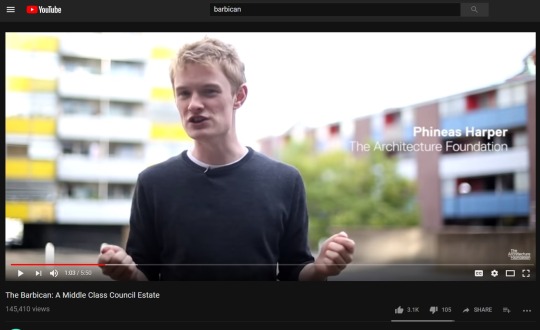
(Image 1.4 'The documentary is fully presented by Phineas Harper, who is exploring the estate in person)
The first documentary film was The Barbican: A Middle-Class Council Estate, written and presented by Phineas Harper and co-produced by Architecture Foundation & The Architecture Review.[12] As an example of a relatively short 6-minute documentary, it is based around a single building briefly covering its architects, possible references, construction in order to deliver a message of its present architectural significance. Although the proposed narrative of our research is based on contrasting various case studies around Save Dunelm House preservation campaign, what has been noted from that film was the use of rich visual line of clips and close up images of Barbican architectural elements to highlight its architectural ‘poetical’ references with remains of London’s medieval castle wall that runs across the site, which could be potentially useful in delivering the significance of Dunelm House in its rich historic context of UNESCO-protected city of Durham. The other notable detail is dramatic and factual introduction without revealing the subject until the very last minute, supported with stimulating soundtrack. This film is clearly an example of Expository mode of the documentary.
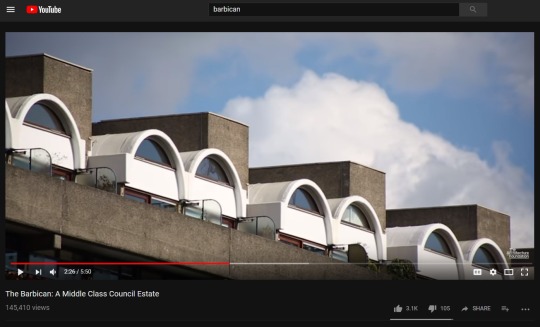

(Image 1.5 & 1.6 'Visual referencing helps to link the background discussion of influences on modern design from existing vernacular elements of Barbican wall)
The second contrasting documentary example was Jonathan Meades’ two-part piece 'Bunkers, Brutalism, Bloody-Mindedness: Concrete Poetry' for BBC4 Channel in 2014.[13],[14] A bit predisposed, very artsy and sometimes even goofy, it manages to introduce the topic of Brutalism in a very engaging for unprofessional public eye way through culturalimaginary of provocative film pieces that would not leave you bored in any second.
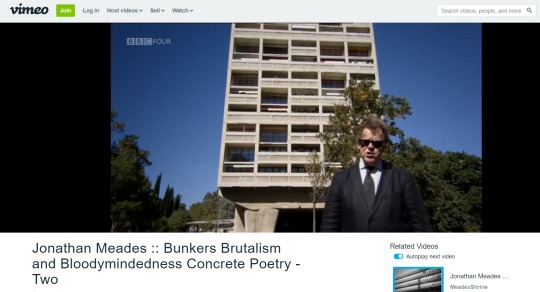
(Image 1.7 'Meades is always present throughout the whole documentary)
The art critic Fisun Güner noted on Meades’s film that ‘his hauteur goes so aggressively against current television convention’ praising his ability to present the facts ‘without being too explicit at the cost of being naïve’ in his quite personal conception on heritage and its preservation.[15] The value of this example is undoubtedly in Meades’s artistic ability to deliver the message of past and current preservation policies to wider masses in a less obstructive or overly academic way, introducing some elements of random visual spectacle into the story that personally trills and excites. This film can be considered between Expository and Poetic modes, where the first one is focusing on defending brutalism with rich enquiry of historic facts and supporting examples, while the second mode is bringing rather astonishing and provocative footage out of the context to artistically pursue the main argument.
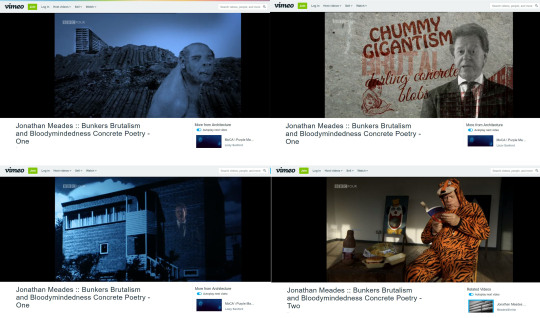
(Image 1.8 'These series of screenshots represent the complexity & contradiction of visual language that Meades is using to present his argument )
The third investigated documentary is an episode from English Heritage - Romancing the Stone filmed by BBC2 from Patrick Forbes in 2009 as a part of series that celebrate the conservation organisation’s efforts and dedication to various listed architecture in Britain. It has been the most relevant example of film that focuses on agencies that were involved in ongoing preservation measures of the largest listed Brutalist building in Europe – Park Hill ex-council estate in Sheffield.
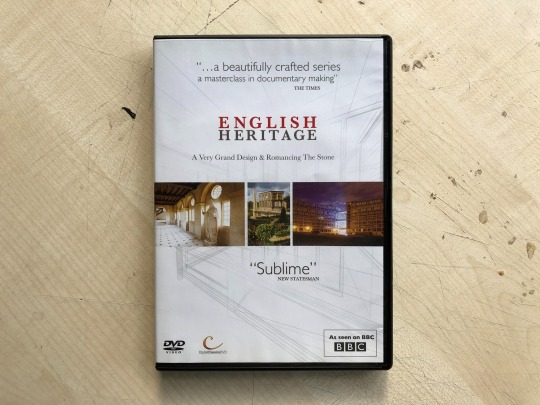
(Image 1.9 'English Heritage documentary DVD with episode Romancing the Stone about Park Hill was purchased for study as it was not available online)
According to architecture critic Owen Hatherley, the documentary’s general storyline is based on amusing tensions and questionable compromises between the EH conservation expert insisting on particular expensive concrete preservation method and then giving up, the Studio Egret West architect proposing a new tacky coloured aluminium façade resulting in stripping the existing façade and the Urban Splash developer, who is shown to be only worried about the cost of those suggested measures and profits from their investment especially after economic recession that coincided with this regeneration project.[16] While the BBC2 film was initially aiming to signify conservation duties of English Heritage with other agencies involved in four independent architectural case studies, the Romancing the Stone certainly succeed in raising questions about the attitude of both organisations involved in Park Hill preservation as Brutalist heritage attracting critical opinions from notable architecture journalists and campaigners from the C20 society. This documentary floats between Participatory since the speaker himself is present at the reconstruction site and Observational mode that focuses on real confrontations between agencies without filmmaker’s interference. In is also worth mentioning that chairman of Urban Splash Tom Bloxham released his personal account on BBC’s film, where he stated his discouragement with rather antagonistic portrayal of two major agencies involved into the project and ‘hoping that the next Park hill documentary will be more positive’.[17]

(Image 1.10 'The documentary was quite honest in demonstrating arguments between various agencies such as Urban Splash chief contractor vs concrete expert from English Heritage, who refuses to invest organization's funds into the scheme if the concrete will be painted over to cut restoration costs'
Therefore, Participatory mode of this film could be adopted as a dominating model for our research documentary, which expresses the intention of both - Save Dunelm House activists and detractors from Durham University estates team without openly suggesting a side to the viewer. On the contrary, representing and experiencing all involved into campaign agencies through series of conducted interviews aims to inform the audience to pick their own side of the main argument, especially if participant’s positions seem rather subjective or debatable.
Educational benefits of documentary
A Documentary film as an introduced form of Linked Research project shall encourage critical thinking, if specifically, in our case – learning the wider context of agencies and their duties in various examples of campaigns for modernist buildings, and discovering facts and methods that can eliminate many superstitions about the existing issue as well as try to address where are they coming from. The other important skill is narrative building that is very useful to creating a storyline not only for the film, but quite possibly for architecture project thesis. Learning filmmaking technical skills is also a beneficial part of the thesis project, which can be useful mean in presentation of architectural ideas and concepts through video format and not necessarily documentary. Charlotte Skene-Catling, the co-founder of architecture studio and organiser of Archfilmfest in London, believes that ‘the symbiosis of architecture and film is very much the future’ which results in architecture universities training students in filmmaking introducing CGI and 3D modelling new technologies from different perspective.[18] Indeed, the support to her words can be found in three recent 2017 RIBA President Medal winners, who produced short animated films for their thesis project narrative.[19] Finally, our documentary can be potentially presented at architecture festivals increasing more attention of other enthusiasts to current problem of preserving modernist heritage in the UK.
Reference list
[1]https://www.theguardian.com/tv-and-radio/tvandradioblog/2014/feb/04/brief-history-architecture-tv-nation-builders-bbc
[2] http://www.documentarytube.com/articles/how-documentary-films-benefit-the-world
[3] https://www.goodreads.com/author/show/9010.Bill_Nichols
[4] https://www.ijlter.org/index.php/ijlter/article/viewFile/601/311 p.36
Cantine, J., Howard, S., & Lewis, B. (2000). Shot by shot: A practical guide to filmmaking (3rd ed.). Pittsburgh, PA: Pittsburgh Filmmakers. P.14
[5] Introduction to Documentary by Bill Nichols, ‘What types of Documentaries Are There?’, p.99
[6] Introduction to Documentary by Bill Nichols, ‘What types of Documentaries Are There?’, p.103
[7] Introduction to Documentary by Bill Nichols, ‘What types of Documentaries Are There?’, p.105
[8] Introduction to Documentary by Bill Nichols, ‘What types of Documentaries Are There?’, p.110-112
[9] Introduction to Documentary by Bill Nichols, ‘What types of Documentaries Are There?’, p.116
[10] Introduction to Documentary by Bill Nichols, ‘What types of Documentaries Are There?’, p.125
[11] Introduction to Documentary by Bill Nichols, ‘What types of Documentaries Are There?’, p.130
[12] https://www.youtube.com/watch?v=FFDpqRxym_A&t=220s
[13] https://vimeo.com/93963469
[14] https://vimeo.com/93116236
[15] https://theartsdesk.com/tv/bunkers-brutalism-and-bloody%C2%ADmindedness-concrete-poetry-bbc-four
[16] https://www.theguardian.com/artanddesign/2009/may/02/architecture-brutalism-park-hill
[17] http://www.urbansplash.co.uk/blog/category/bbc
[18] https://www.dezeen.com/2017/12/22/architecture-film-movies-genre-in-the-making-festivals-multiply/
[19] https://www.dezeen.com/2017/12/06/royal-institute-british-architects-student-medals-2017-news-awards-uk/
Other researched links
Framing representations: Documentary filmmaking as research inquiry (Research paper)
http://www.academia.edu/1166130/Framing_representations_Documentary_filmmaking_as_research_inquiry
Digital Video as Research Practice: Methodology for the Millennium (Research paper)
https://files.eric.ed.gov/fulltext/EJ805391.pdf
A brief history of architecture on TV (Article)
https://www.theguardian.com/tv-and-radio/tvandradioblog/2014/feb/04/brief-history-architecture-tv-nation-builders-bbc
Architectural documentaries on British television: introduction (Research paper)
https://academic.oup.com/screen/article-abstract/59/1/99/4937788
Architecture film is "a genre in the making" as festivals multiply (Article)
https://www.dezeen.com/2017/12/22/architecture-film-movies-genre-in-the-making-festivals-multiply/
Activist documentaries: Preaching to the converted? (Article)
http://www.bbc.com/culture/story/20140423-preaching-to-the-converted
How Social Media has Changed the Game for Documentary Filmmaking (Article)
https://mashable.com/2010/09/21/documentaries-social-media/#3LhA8WbmGiqF
Image list
1.1 - https://www.theguardian.com/tv-and-radio/tvandradioblog/2014/feb/04/brief-history-architecture-tv-nation-builders-bbc
1.2 - Author's photograph
1.3 - https://www.bbc.co.uk/programmes/b01qfr95
1.4 - https://www.youtube.com/watch?v=FFDpqRxym_A&t=220s (screenshot from documentary)
1.5 - https://www.youtube.com/watch?v=FFDpqRxym_A&t=220s (screenshot from documentary)
1.6 - https://www.youtube.com/watch?v=FFDpqRxym_A&t=220s (screenshot from documentary)
1.7 - https://vimeo.com/93116236 (screenshot from documentary)
1.8 - https://vimeo.com/93116236 (screenshot from documentary)
1.9 - Author's photograph
1.10 - English Heritage DVD, Episode 2 'Romancing the Stone' filmed by BBC2
...
0 notes
Text
Source notes: Cave Gave Game: Subterranean Space as Videogame Place
(Jerz & Thomas, 2015)
Type: Journal Article
Discipline: Ecology/Critical Analysis
Relevance: 1/5
An essay examining how humans experience cave spaces through the lens of computer games.
It begins by giving a more detailed account of the history of Colossal Cave Adventure, telling of how it was based on the Mammoth Cave System in southwestern Kentucky, and the moment when Pat Crowther, the wife of that game's creator, "squirmed through a muddy tunnel in September of 1972, she formed the final link in the chain, thereby establishing Mammoth as the world’s most extensive subterranean network – that is, the “longest cave.”". It explains the motivation behind the creation of the game as a way for William Crowther to connect with his daughters and impress his Dungeons and Dragons friends. The importance of Colossal Cave Adventure within the context of understanding human interaction with caves is claimed due to its relationship with real world caves and the fact it embodies "their meanings as places of mystery, shelter, wonder and leisure."
It is argued that by making players experience the virtual cave of Colossal Cave Adventure through text and the sharing of its source code via the internet (allowing others to extend it), the idea of caves as a computer game setting and assumptions regarding their design were seeded in gaming culture at a formative stage.
The essay contains an interesting note on how the game came to be released:
"Crowther worked on his game during the 1975-76 academic year, showing it to his children when they came to visit him during school breaks. Jerz’s interviews with Crowther and his family support the 1975-76 span, and no evidence contradicts it. At some point after Crowther stopped working on the game, Stanford University grad student Don Woods found it on a computer at the Stanford campus, expanded it, and re-distributed it online. While Woods has offered 1976 as the date he published the collaboration, the earliest extant version of the Crowther/Woods version is dated 1977. Woods acknowledges Adventure’s parser was primitive (qtd. in Montfort 89), and notes that the game had nothing to do with the professional activities of the Stanford Artificial Intelligence Laboratory (Woods)"
As with (Rautzenberg, 2020), a parallel is drawn between cartography as a core part of speleology and the prominence of maps in many games, with gameplay often involving the filling, marking and interpreting of maps, as well as the player having to rely upon them when other views of the environment are in some way obscured. To further explore the games as caves metaphor, (Jerz & Thomas, 2015) highlight the use of items and the activity of resource management being common to both caving and RPGs, as illustrated in an account by cavers of exploring the Mammoth Cave System: "The Longest Cave illustrates cavers dealing with resource- and inventory-management decisions that are a large part of role-playing games". One could argue that there are other activities and disciplines that could be claimed to share said commonalities with games, such as rock climbing and metal detecting, undercutting the suggestion that caves and speleology in particular have influenced, or are an especially apt metaphor for, adventure games.
The majority of the remainder of the essay continues along the same lines, investigating ways in which caves and the influence of Colossal Cave Adventure mirror or might have influenced game design and culture. Much of this is unrelated to the design and implementation of caves in games — in terms of best practices, how they vary, the technology and challenges involved in their creation — and so is considered outside the scope of the project.
A takeaway from (Jerz & Thomas, 2015) and (Rautzenberg, 2020) that may be worth including in the manuscript is that cave-like environments (not necessarily resembling rock-based systems) are efficient vehicles or solutions to game design problems when the aim is to implement many common adventure game features (possibly partially explaining their prevalence), such as treasure hunting, item use and discovery, the involvement of maps, exploration, and the connecting of disparate areas. The cited researchers would likely argue that those aforementioned features have become staples in some part due to a combination of the influence of Colossal Cave Adventure and inherent properties of caves, speleology and humans that in interaction with one another affect how people relate to the world around them (both virtual and real). As summarised by (Jerz & Thomas, 2015):
"Do video games reflect an influence of caves? Almost certainly. Thanks to Crowther, caves will be forever linked to the early development of the form. Further, caves, as a form of psychological symbol, would have surely found their place in the narrative structure of games. Dropping down into a cave is about leaving the familiar, surface world. Save for rare examples of the harvesting of bat guano or the occasional rescue operation, there is little practical reason to delve deeply into the maw of naturally existing caverns. Still, people dream about caves, wonder about caves, and finally one day charge head-first into the blackness that lurks just beyond the reach of their shiny brass lanterns."
However, such research paths stray too far from the technology, development, and to an extent design, focus of the project, for them to be included.
0 notes
Text
Source notes: Caves, Caverns and Dungeons: Speleological Aesthetics in Computer Games
(Rautzenberg, 2020)
Type: Book Chapter
Discipline: Media Studies
Relevance: 1/5
Opens by discussing Tomb Raider — specifically the popularity and iconic status of Lara Croft, and the subsequent discourse centred around the character — before making the argument that the real success and achievement of the 1996 title is not the protagonist, instead it "lies in the ways the game depicts and implements the exploration of caves, caverns and dungeons as a metaphor and gameplay mechanic" . The author states their aim of taking a speleological approach (speleology is the study of caves, essential to which is exploration and cartography) to forming an epistemology of computer game caves. That is, to consider computer game caves in terms of how they are explored and mapped by the player.
The author describes how one of the earliest computer games, the text-based Colossal Cave Adventure, was created by William Crowther, himself an amateur speleologist, using software for describing and mapping caves as its foundation. The virtual cave-systems of Colossal Cave Adventure contained treasure and enemies, with the job of the player to explore and progress by combining items and tools. Rautzenberg argues that the basic structure of adventure games has changed little despite their increased scale and the use of 3D graphics, based on the given description of Colossal Cave Adventure. That may be true in many cases, with it arguably depending on the particular approach used to abstract and describe a game's structure, however the criteria is of such a generic quality that applying it to modern adventure games does not say much about how they have changed or remained the same since 1976 when Colossal Cave Adventure was created.
Rautzenbreg proceeds to proffer that all games featuring polygonal landscapes are set in cave-like environments because of the use of sky-boxes and other impenetrable world boundaries. One could argue that this overlooks games that create the effect of a limitless environment using procedural generation and other techniques, as well as it being true for all forms of media when logically extended — boundaries must always exist for virtual worlds and characters (with the ultimate boundary being the form itself).
Much of the writing that follows does not discuss computer game caves in terms of their history, how they are used from a design standpoint, or how they have developed technologically, instead discussing: Plato’s allegory of the cave; how caves and speleology are suitable metaphors for games and the act of playing; and how player exploration, mapping and in-game maps themselves can be considered within the context of existing theories in media studies. Such content is considered out of as far as the project is concerned.
There are some interesting thoughts on the purpose of computer game caves being places to hide items, with the searching and finding of them, rather than the items themselves, being the important and engaging aspect of gameplay in many cases.
1 note
·
View note